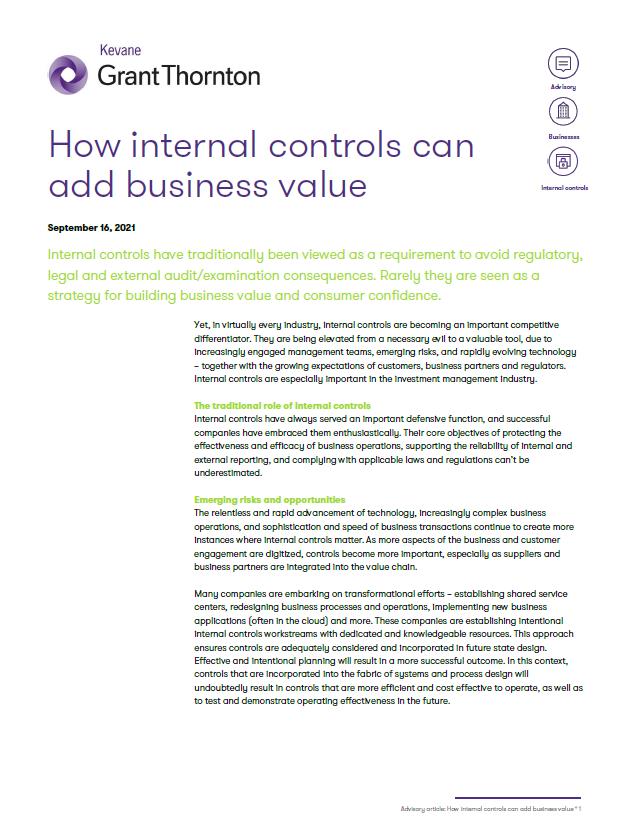-
Financial statements audits
Financial statement audits
-
Compliance audits
Compliance audits
-
Compilations and reviews
Compilations and audit
-
Agreed-upon procedures
Agreed-upon procedures
-
Tax compliance
Business Tax
-
Global mobility services
Through our global organisation of member firms, we support both companies and individuals, providing insightful solutions to minimise the tax burden for both parties.
-
Sales and use tax and indirect taxes
SUT/ VAT & indirect taxes
-
Tax incentives
Navigating the complex landscape of tax incentives in Puerto Rico can be challenging. Whether you're looking to benefit from the Export Services Act (Act 20), the Individual Investors Act (Act 22), or other incentives under Act 60, we provide tailored advice to help you maximize your tax benefits and ensure compliance. Let us help you unlock the potential of doing business in Puerto Rico.
-
Transfer Pricing
The laws surrounding transfer pricing are becoming ever more complex, as tax affairs of multinational companies are facing scrutiny from media, regulators and the public
-
International Business Center
Kevane Grant Thornton is an International Business Center within the Grant Thornton network. Our expert team provides integrated solutions to help Puerto Rico businesses navigate the complex issues that arise when developing global businesses.

-
Business consulting
Our business consulting services can help you improve your operational performance and productivity, adding value throughout your growth life cycle.
-
Business Risk Advisory
Risk is inevitable but manageable. We deliver relevant, timely and practical advices to aid organizations manage risk and improve business performance. We can help you identify, understand and manage potential risks to safeguard your business and comply with regulatory requirements.
-
Technology Advisory
We provide comprehensive solutions to safeguard your business and ensure operational resilience and compliance. Our expert team offers a range of technology advisory services designed to address your cybersecurity needs, enhance business continuity, and manage security effectively.
-
Transactional advisory services
Transactions are significant events in the life of a business – a successful deal that can have a lasting impact on the future shape of the organizations involved. Because the stakes are high for both buyers and sellers, experience, determination and pragmatism are required to bring deals safely through to conclusion.
-
Forensic and investigative services
At Grant Thornton, we have a wealth of knowledge in forensic services and can support you with issues such as dispute resolution, fraud and insurance claims.

Internal controls have traditionally been viewed as a requirement to avoid regulatory, legal and external audit/examination consequences. Rarely they are seen as a strategy for building business value and consumer confidence.
Internal controls are becoming an important competitive differentiator in every industry. They are being elevated from a necessary evil to a valuable tool, due to increasingly engaged management teams, emerging risks, and rapidly evolving technology – together with the growing expectations of customers, business partners and regulators. Internal controls are especially important in the investment management industry.
The traditional role of internal controls
Internal controls have always served an important defensive function, and successful companies have embraced them enthusiastically. Their core objectives of protecting the effectiveness and efficacy of business operations, supporting the reliability of internal and external reporting, and complying with applicable laws and regulations can’t be underestimated.
Emerging risks and opportunities
The relentless and rapid advancement of technology, increasingly complex business operations, and sophistication and speed of business transactions continue to create more instances where internal controls matter. As more aspects of the business and customer engagement are digitized, controls become more important, especially as suppliers and business partners are integrated into the value chain.
Many companies are embarking on transformational efforts – establishing shared service centers, redesigning business processes and operations, implementing new business applications (often in the cloud) and more. These companies are establishing intentional internal controls workstreams with dedicated and knowledgeable resources. This approach ensures controls are adequately considered and incorporated in future state design. Effective and intentional planning will result in a more successful outcome. In this context, controls that are incorporated into the fabric of systems and process design will undoubtedly result in controls that are more efficient and cost effective to operate, as well as to test and demonstrate operating effectiveness in the future.
Evolving best practices
Adding value also means working smarter:
- know the risks you’re trying to mitigate before you even talk about controls.
- find those “killer” controls that address multiple risks.
- develop enterprise control standards to establish expectations and drive consistency across decentralized operations.
- challenge the control mix – such as automated vs. manual, preventative vs. detective, and transactional vs. process vs. entity-level.
- reduce control duplication, being careful not to be “over-controlled.”
- maximize the use of technology in control operation and in your risk management and assurance functions.
There is also tremendous opportunity to dramatically improve efficiency and reduce cost associated with control monitoring and testing. Done right, control testing is a repeatable, recurring, and predictable process. As a result, it is ripe for automation using low code solutions, analytics, and robotic process automation (RPA) platforms. Once established, control test automation (CTA) dramatically reduces the time to test controls, allows you to test controls more frequently, reduces the cost of compliance and offers the added benefit of covering the entire transaction population.
Internal controls have always played an important role by protecting companies from negative consequences. But, employed intelligently, they are virtually guaranteed to help improve business performance and accelerate competitive advantages.
Grant Thornton library articles.
We are committed to keep you updated of all developments that may affect the way you do business in Puerto Rico. Please contact us for assistance in relation to this or any other matter, we will be glad to assist you.






